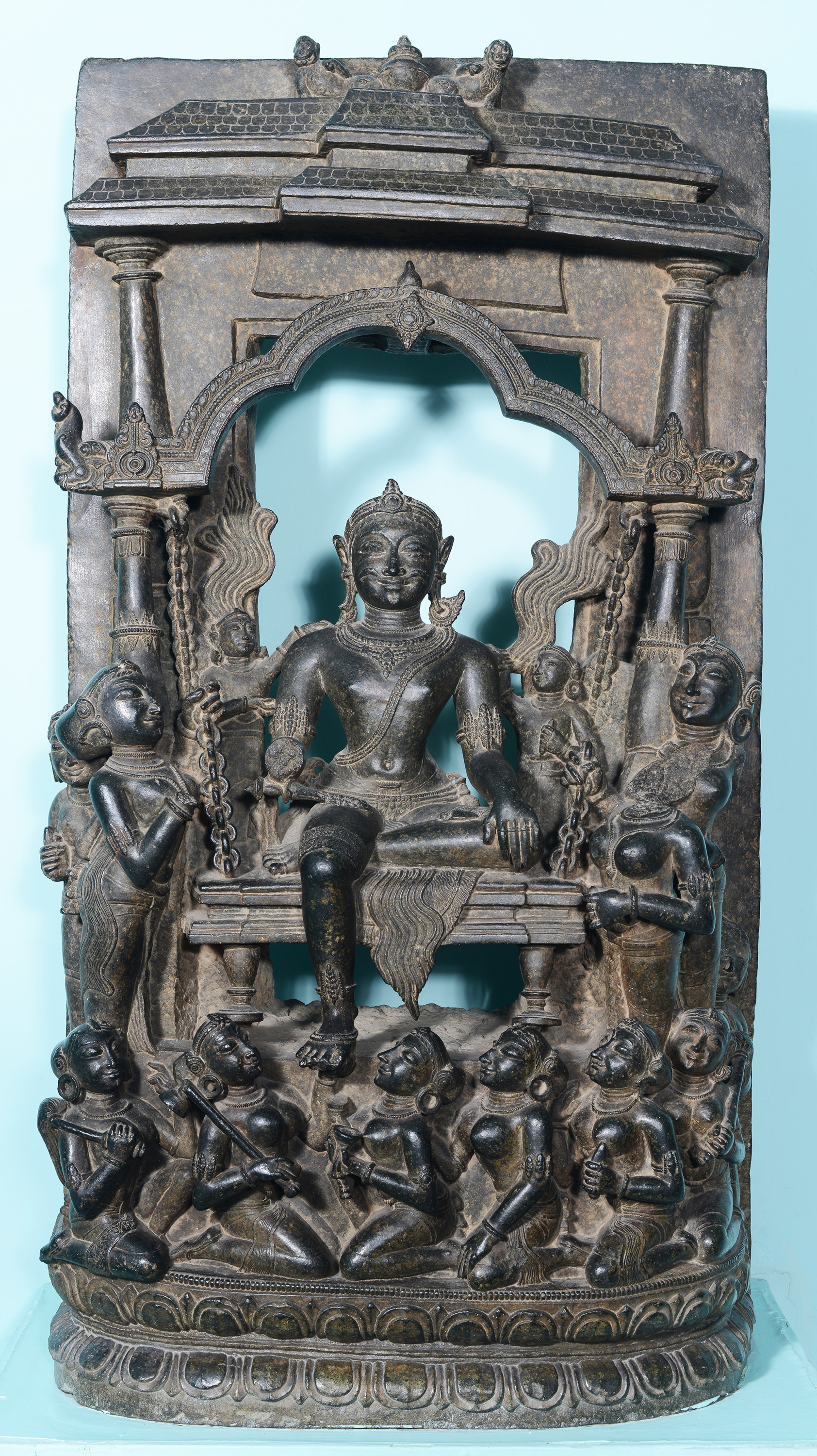Discover, Learn, immerse, Connect
King Narasimha Seated on a Swing
This intricately sculpted piece made of the black stone depicts King Narasimha I seated on a swing. The sculpture has its origin in Konarak, Odisha and dates back to 13th century CE. It is currently on display at the National Museum, New Delhi.
The Eastern Ganga dynasty or Chodaganga dynasty was a medieval Indian dynasty that ruled over Kalinga from the 11th century to the 15th century. The territory ruled by the dynasty includes the whole of the modern-day Odisha as well as parts of West Bengal, Andhra Pradesh and Chhattisgarh. Its King Narsimha was glorified in multiple phrases and sections of literary works and also in a vast number of sculptures.
It has always been important for heads of state especially in monarchies or absolutist states to portray themselves as prosperous, healthy and virtuous so as to reassure their citizens of their ability to rule credibly and for a long time. King Narasimha would have also had similar intentions when he commissioned this sculpture of himself in black stone. It is small in size so as to be kept in domestic spaces as opposed to public ones. This intention may be read as a desire to be a part of the domestic life of his people, to be venerated, not only due to public practice but due to personal devotion.
Portraits of kings from ancient and early medieval times are usually focused on immortalizing the King and symbolically implying his superiority. Several portraits and sculptures of King Narsimha of Odisha survived the ruins of time. In this sculpture, King Narsimha is seated on a swing hinting that he is in royal ease. Women are placed by his feet to attend to him. He sits under an arch with his left leg folded and flexed at the knee and his right leg suspended. He has two women standing on either side of the swing followed by four female musicians playing the veena and cymbals at the bottom centre of the sculpture. On the pedestal in the front are carved two female fly-whisk bearers. It is interesting to note that the figure of the King Narsimha is the largest in the sculpture whereas all the other characters in the scene are relatively smaller in size hinting at the importance of the king viz-a-viz everyone else. He is heavily decked with jewellery and seems to have a smile on his face. He is also shown to have long ears which are a symbol of an extraordinary man (mahapurush lakshan).
 Government of India
Government of India



